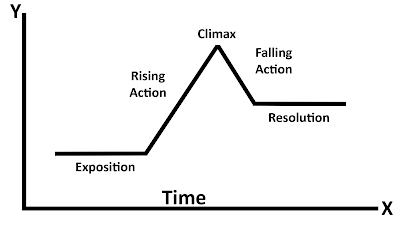Review - Cogmind
In a deep cavern, a robot awakens. With no knowledge of your past you must fight your way out of this strange and living compound. Cogmind is a recently released rouge-like game. It harkens back to the original Rogue with it’s simplified graphics, but uses more advanced AI to create a more living world within the game.
The gameplay of Cogmind is a pretty basic tile-based dungeon crawler. The player can explore the world in a turn-based manner, revealing the map as you go. Combat also works on a turn-based system wherein the player can move or shoot their various weapons. Really, the basic mechanics aren’t any more complicated than that. The only real variation in gameplay occurs in the power system. Each element that the player can equip to their robot requires that they use energy to run. Without enough power the player won’t be able to shoot, making them useless in combat. There’s little more to it then any mana system you might find in other games.
Now, one of the hallmark elements of Cogmind is the modular nature of the player’s character. Basically, the player can find robot parts on the ground or from fallen enemies. These pieces can then be slotted into one of various inventory spaces. For the most part, this is not particularly different from any other character equipment system. Where it does deviate is in the propulsion and energy categories. The former determines how fast and by what means the player moves (rolling, walking, flying). The latter determines how substantial of equipment the player can use. However, these elements don’t really stand out as revolutionary new systems.
Cogmind’s core mechanics do not shake up the rouge-like formula all that much. They are well polished and are thereby certainly solid elements of this work. Had there been more emphasis on each piece of equipment being specialized at facing different in-game challenges, then this modularity would be far more significant. As it is, it exists as a basic inventory system. The combat is similarly simple. There are a few different types of weapons, but they basically break down by range or whether they’re area of effect. There’s enough to allow for different play-styles like melee or explosive, but I found that the numbers were the biggest difference between weapons.
There is a narrative in the work but, like in most rouge-like games, it is an afterthought that flavors gameplay. The story is told through a set of text logs that the player can access by hacking terminals throughout the game. It follows a pretty predictable dystopian future narrative with pollution and rampaging AI alike. There is no particular depth or complexity to it, as is to be expected. It just acts to give the player a vague reason why they should be doing what they are doing.
The real star in Cogmind is how the world manages to feel alive. The majority of robots that the player runs into are not combatants, but instead are utility robots for the facilities. They travel around performing various tasks such as mining, cleaning, or hauling items. All of the task are things that make sense in the context of an operational facility and they are actually done. A cleaning robot actually scurries around and cleans battlefields whereas building robots actually repair areas that were damages. Such mundane elements are usually ignored in other games, leaving the player to suspend their disbelief pertaining to how functional a game’s world really is. Cogmind is given a lot of character just from the fact that it acknowledges and implements these mundane elements.
Of course, with any rouge-like it is important to discuss its replay-ability. On the one hand, Cogmind is definitely designed to have a lot of potential replay value. The player starts with a wide array of the lowest level equipment to choose from, allowing one to start with a variety of different builds from a hover bot to a laser wielding walker. With the rest of the game being randomized, there’s always a new challenge to face.
While there is variety in what the player can choose to initially equip themselves with, the similarity of the different locomotion methods and the limited variety of weapons does leave the initial section of the game lacking in variety. The facility is actually a nice element of replay-ability. Each floor, those being levels, can be one of a few different types of environments, mostly focusing on either the factory style buildings or underground caves. The environments are very different with radically different layouts, ways to explore them, and threats. By having such varying environs, Cogmind has a lot of content that can continue to surprise the player.
Overall, Cogmind is a decent rouge like experience. It’s use of NPCs that perform mundane tasks makes the environment come to life in a way that most games do not. The modularity of the player character, which is one of the selling points of this piece, leaves a bit to be desired. The different forms of locomotion never felt significantly different and the rest is akin to any other game’s inventory system. The weapons, at least, do have good variety to them. There is good replay-ability as the game has numerous types of areas that are each significantly different from one another, offering a good variety of challenges. Basically, if you’re looking for a new rouge-like and don’t mind the simpler graphics than this is a game that you could consider. It doesn’t radically deviate from the norm, but it is a decent play.





Comments
Post a Comment